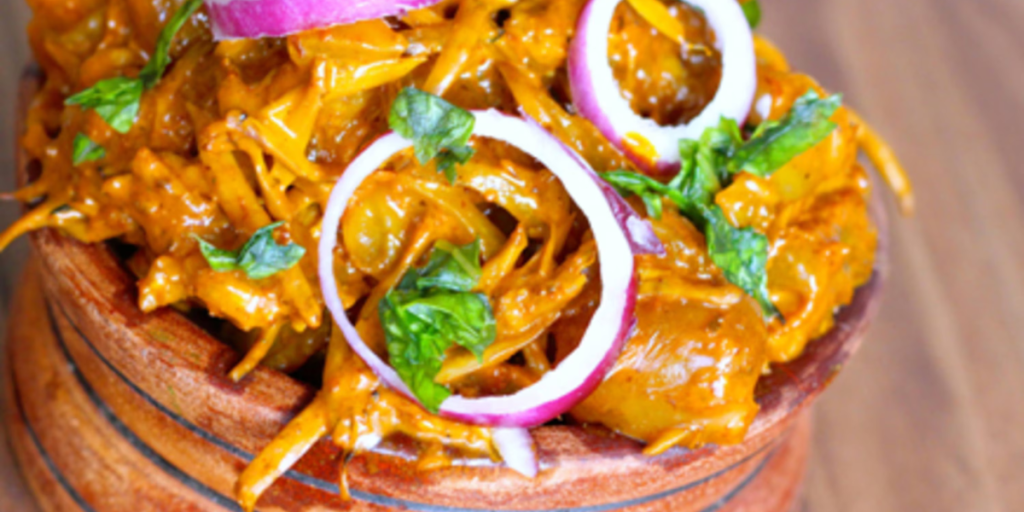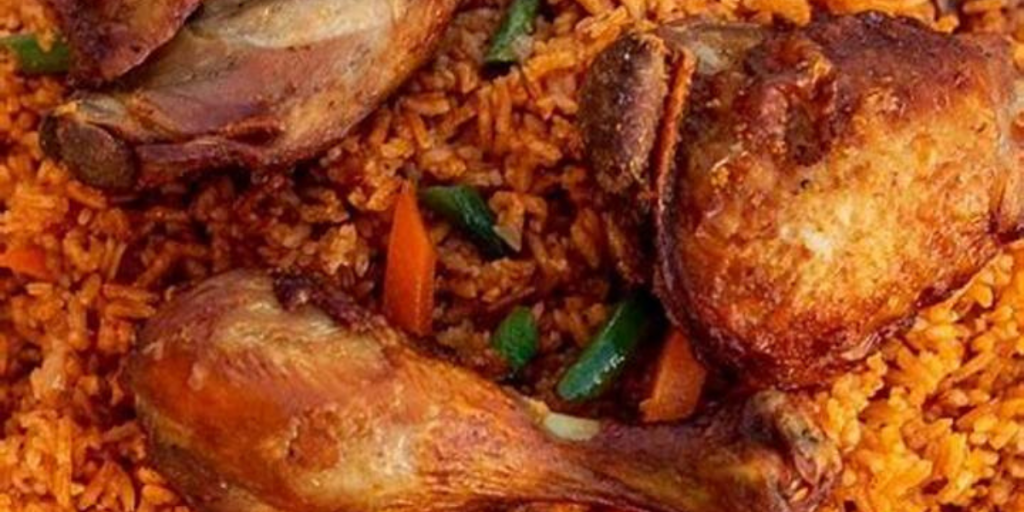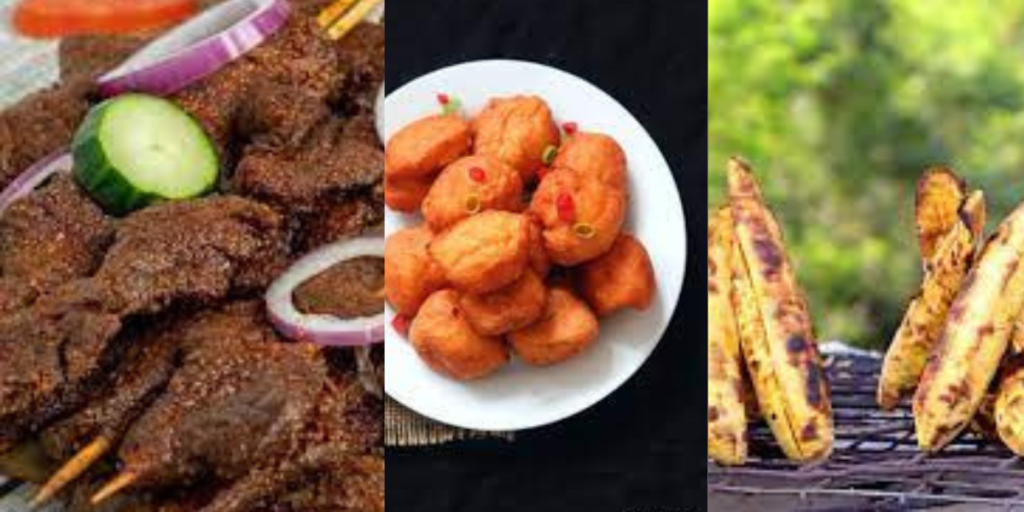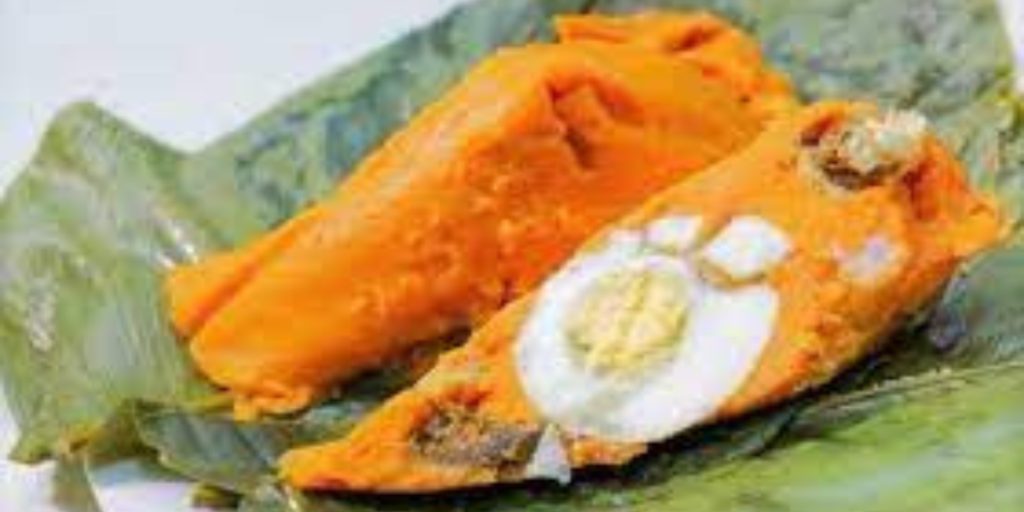Table of Contents
Choosing Nigerian dinner ideas for tonight provides an opportunity to indulge in the country’s rich culinary traditions. Each dish not only satisfies the appetite but also serves as a cultural representation, offering insight into the customs, ingredients, and cooking styles found throughout the nation. The three dishes we’ll explore in depth—Nkwobi, Jollof Rice, and Chicken Pepper Soup—are beloved across the country and have become icons of Nigerian cuisine.
Nkwobi: A Deep Dive into the Traditional Igbo Delicacy (Nigerian Dinner Ideas)

Historical Background and Cultural Significance
Nkwobi is a dish that holds significant cultural and historical importance among the Igbo people of Southeastern Nigeria. Traditionally, it was a delicacy reserved for men who gathered at local bars or “bukas” after a long day of work. These men would enjoy Nkwobi as a snack while drinking palm wine or local beer, discussing various topics ranging from village politics to family matters. Over time, however, the dish has transcended these initial cultural boundaries to become a popular meal for everyone, including women and children.
The name “Nkwobi” refers specifically to cow foot, which is the primary ingredient in the dish. However, its preparation and presentation have evolved, with some variations including goat meat, snails, or offals for a different twist. Today, Nkwobi is served in many upscale Nigerian restaurants and is often seen as a “must-try” dish for tourists interested in local cuisine.
Detailed Preparation Techniques and Ingredients
The process of preparing Nkwobi involves several steps, each crucial for achieving the dish’s signature taste and texture. Here’s a more in-depth look at the process:
- Ingredient Selection:
- The choice of cow foot is vital because it must be fresh and cleaned thoroughly to remove any dirt or impurities. Traditionally, some people prefer using parts of the cow that include skin, tendons, and ligaments because they add a chewy texture to the dish.
- The spices used in Nkwobi are also significant, as they contribute to the dish’s rich and complex flavor. Common spices include ground crayfish, pepper, uziza seeds, and Cameroon pepper. Uziza leaves or seeds bring a peppery taste, while the crayfish adds an umami flavor.
- Cooking the Meat:
- The cow foot is cut into small pieces and boiled for about an hour or more until it becomes tender. During the boiling process, onions, salt, and seasoning cubes are added to infuse the meat with flavor. Patience is required, as rushing this step can result in tough, chewy meat that lacks the desired softness.
- Emulsifying Palm Oil and Potash:
- This step is the secret to achieving Nkwobi’s characteristic thick sauce. Potash (kaun) is dissolved in a small amount of water and then added to palm oil, stirring continuously. The mixture will gradually turn into a creamy, yellowish paste, which forms the base of the dish. However, it’s important to use potash sparingly because too much can give the dish a bitter taste.
- Mixing in the Meat and Spices:
- Once the palm oil mixture is ready, the cooked cow foot is added, along with spices such as ground crayfish, ground pepper, and seasoning cubes. Stirring thoroughly ensures that each piece of meat is well-coated with the sauce.
- Garnishing and Serving:
- The dish is garnished with sliced onions and thinly cut utazi leaves. The onions add a crunch, while the utazi leaves contribute a slightly bitter taste that complements the dish’s rich flavors. Nkwobi is traditionally served in a wooden or clay bowl to preserve its warmth and add an authentic touch.
Regional Variations and Modern Adaptations (Nigerian Dinner Ideas)
While Nkwobi remains a traditional Igbo delicacy, its popularity across Nigeria has led to various adaptations:
- Goat Meat Nkwobi: This variation substitutes cow foot with goat meat, offering a different texture and taste. Goat meat is leaner and has a more distinct flavor, making it a popular choice for those who prefer a lighter meal.
- Nkwobi with Snails: For a more exotic twist, snails can be used in place of cow foot. This version is known as “Ngwongwo” in some parts of Nigeria. Snails are considered a delicacy and are loved for their unique taste and chewy texture.
- Vegetarian Nkwobi: Although not traditional, a vegetarian version can be made using mushrooms or tofu, which are coated in the same palm oil sauce. This adaptation caters to vegetarians who want to enjoy the flavors of Nkwobi without meat.
Health Benefits and Nutritional Value(Nigerian Dinner Ideas)
Nkwobi is a dish that offers several health benefits, particularly because of its high protein content. Cow foot is rich in collagen, which supports joint health and improves skin elasticity. It also contains essential minerals such as magnesium and calcium, which contribute to bone strength.
The spices used in Nkwobi, such as uziza and crayfish, are known for their digestive benefits. Uziza seeds, in particular, have been used in traditional medicine to treat stomach ailments and improve digestion.
Common Misconceptions About Nkwobi
Some people mistakenly think Nkwobi is too spicy for their taste, but the level of spiciness can easily be adjusted to suit individual preferences. Another misconception is that Nkwobi must be consumed with alcohol, as it was initially a “bar food.” In reality, it can be enjoyed with various non-alcoholic drinks or simply on its own as a meal.
Serving Suggestions and Pairings
To complete the Nkwobi experience, serve it with a side of chilled palm wine or a refreshing glass of zobo drink. Some people prefer eating Nkwobi with a starchy side like yam, plantains, or agidi (cornmeal pudding), which helps balance the dish’s richness. Adding a light salad with tomatoes, onions, and cucumbers can also bring a fresh element to the meal.
Jollof Rice: Nigeria’s Favorite Rice Dish (Nigerian Dinner Ideas)

The History and Origins of Jollof Rice
Jollof Rice is one of the most iconic dishes not only in Nigeria but across West Africa. The dish traces its roots to the Wolof people of Senegal and Gambia, with the original version known as “thieboudienne.” Over the centuries, it spread across the region, adapting to local tastes and ingredients in each country.
In Nigeria, Jollof Rice has become synonymous with celebrations, particularly weddings, birthday parties, and festive occasions. The “party Jollof” version is especially famous for its smoky flavor, which is achieved by cooking the rice on high heat until a layer of slightly burnt rice forms at the bottom of the pot. This layer is known as the “bottom pot” or “concoction rice,” and many consider it the best part of the dish.
Step-by-Step Jollof Rice Preparation
Creating authentic Nigerian Jollof Rice involves careful selection and preparation of ingredients to achieve the perfect balance of flavors and texture. Here’s a step-by-step guide:
- Preparing the Tomato and Pepper Base:
- Blend fresh tomatoes, red bell peppers, scotch bonnet peppers, and onions until smooth. This mixture is referred to as the “tomato stew” and forms the base of the dish.
- Fry the tomato mixture in a generous amount of oil until it thickens and the oil separates from the paste. This step is crucial for achieving the characteristic color and depth of flavor.
- Cooking the Rice:
- The choice of rice is essential; long-grain parboiled rice is the most commonly used in Nigeria. It absorbs flavors well without becoming too mushy.
- Add the washed rice to the cooked tomato stew, stirring to ensure the grains are evenly coated. Pour in chicken or beef stock, and allow the rice to cook on low heat. This slow cooking method ensures that the flavors are absorbed thoroughly.
- Achieving the Smoky Flavor:
- To get that signature “party Jollof” taste, let the rice cook until it starts to burn slightly at the bottom. This burnt layer adds a smoky depth to the dish, which is considered essential by many Nigerians.
- Optional Additions and Final Touches:
- You can add mixed vegetables like carrots, green beans, or peas towards the end of the cooking process for extra color and nutrition.
- Some people enjoy incorporating meats such as fried chicken, beef, or goat meat directly into the Jollof Rice for a one-pot meal.
Jollof Rice Across West Africa: A Culinary Rivalry (Nigerian Dinner Ideas)
The debate over which country makes the best Jollof Rice is a topic of constant discussion among Nigerians, Ghanaians, and Senegalese. Each country has its distinct style:
- Nigerian Jollof: Known for its smoky flavor and slightly spicy taste.
- Ghanaian Jollof: Often cooked with basmati rice, giving it a different texture and aroma.
- Senegalese Jollof (Thieboudienne): Typically includes fish and vegetables, staying true to its coastal origins.
This rivalry has even led to Jollof Rice festivals and cook-offs’
Nigerian Dinner Ideas : Best 10 Nigerian Dinner Ideas
Suya: The Grilled Delight of Nigeria (Nigerian Dinner Ideas)

The Origins and Significance of Suya
Suya is one of Nigeria’s most beloved street foods, renowned for its spicy, smoky flavor. This skewered meat dish has its roots in the northern regions of Nigeria, where it is traditionally made with beef, chicken, or goat meat. Suya has transcended regional boundaries and is now enjoyed across the country and even internationally.
Historically, Suya was more than just food; it was a communal dish often enjoyed at gatherings and celebrations. Street vendors known as “Suya makers” have become integral to urban life, serving this delicious treat in bustling markets and on street corners. Suya has also gained popularity in various forms around the world, representing a unique aspect of Nigerian culinary culture.
In-Depth Preparation Techniques
Making Suya involves several key steps to achieve its characteristic flavor and texture. Here’s how to prepare this mouthwatering dish:
- Choosing the Right Meat:
- Traditionally, beef is used for Suya, specifically cuts like flank or sirloin. Chicken and goat meat are also popular alternatives. The choice of meat will impact the final taste, so select a quality cut.
- Preparing the Marinade:
- The marinade is crucial to achieving the rich, spicy flavor Suya is known for. Common ingredients include:
- Groundnut or Peanut Powder: This adds a nutty flavor and texture to the dish.
- Chili Powder: A mixture of ground peppers gives Suya its signature heat. You can adjust the spice level based on your preference.
- Onions, Garlic, and Ginger: These aromatics enhance the flavor profile, infusing the meat with their savory notes.
- Salt and Seasoning Cubes: To taste, these enhance the overall flavor of the dish.
- The marinade is crucial to achieving the rich, spicy flavor Suya is known for. Common ingredients include:
- Marinating the Meat:
- Cut the meat into bite-sized pieces and marinate it with the spice mix for several hours or overnight. This allows the flavors to penetrate the meat thoroughly.
- Skewering the Meat:
- Thread the marinated meat onto skewers, ensuring not to overcrowd them. If using wooden skewers, soak them in water beforehand to prevent burning.
- Grilling the Suya:
- The skewers can be grilled over an open flame or on a barbecue grill for that authentic smoky flavor. Cook until the meat is charred on the outside and juicy on the inside, usually taking about 10-15 minutes.
- Serving and Garnishing:
- Serve the Suya hot, garnished with sliced onions, tomatoes, and spicy pepper sauce. This adds freshness and enhances the dish’s flavors.
Health Benefits and Nutritional Value (Nigerian Dinner Ideas)
Suya is not just a tasty treat; it also offers several health benefits. The high protein content from the meat makes it a satisfying option for those looking to increase their protein intake. The inclusion of spices like ginger and garlic can aid in digestion and provide anti-inflammatory benefits.
However, it’s worth noting that Suya is often enjoyed with high-calorie accompaniments, so moderation is key. Consider pairing it with fresh vegetables or salads to balance the meal.
Common Misconceptions about Suya(Nigerian Dinner Ideas)
One misconception about Suya is that it can only be enjoyed at street vendors or special occasions. In reality, it’s easy to make at home for casual gatherings or family meals. Another myth is that Suya is too spicy for most people. The level of spice can be adjusted based on personal preference, making it accessible to all palates.
Serving Suggestions and Pairings
Suya pairs wonderfully with various sides, making it a versatile dish. Some popular options include:
- Puff-Puff: These deep-fried dough balls are a perfect contrast to the spiciness of Suya, creating a delightful balance.
- Chin Chin: A crunchy snack that complements the savory flavors of Suya, adding texture to the meal.
- Vegetable Salad: A refreshing salad with fresh vegetables can lighten the meal and provide a nutritious contrast to the grilled meat.
The Origins and Significance of Egusi Soup (Nigerian Dinner Ideas)
Egusi Soup is a popular Nigerian dish made with ground melon seeds, known as egusi. It has its roots in various Nigerian cultures, particularly among the Yoruba and Igbo people. The dish is often served with fufu or pounded yam, creating a hearty and satisfying meal.
Traditionally, Egusi Soup was prepared during special occasions and celebrations, symbolizing hospitality and abundance. Its rich flavors and textures make it a beloved comfort food, often enjoyed in homes across Nigeria.
In-Depth Preparation Techniques
Making Egusi Soup involves several steps to achieve the right consistency and flavor. Here’s how to prepare this delightful dish:
- Choosing the Right Ingredients:
- Key ingredients for Egusi Soup include:
- Ground Egusi Seeds: The star ingredient that thickens the soup and adds a nutty flavor.
- Palm Oil: Adds richness and depth to the soup.
- Leafy Greens: Common options include spinach, bitter leaf, or pumpkin leaves, which add nutrition and flavor.
- Proteins: Commonly used proteins include beef, goat meat, fish, or chicken, which add richness to the dish.
- Key ingredients for Egusi Soup include:
- Cooking the Meat:
- Begin by boiling the chosen meat in a pot with seasoning and spices until tender. This creates a flavorful base for the soup.
- Making the Egusi Mixture:
- Mix the ground egusi seeds with a bit of water to create a thick paste. This paste will help thicken the soup.
- Combining Ingredients:
- In a separate pot, heat palm oil and sauté onions until fragrant. Add the cooked meat along with its broth, then stir in the egusi paste. Allow it to simmer, stirring occasionally.
- Adding Leafy Greens:
- Once the egusi has cooked for about 15 minutes, stir in the chopped leafy greens and allow them to wilt in the soup.
- Final Touches:
- Taste and adjust seasoning as needed. The soup should be rich, thick, and flavorful, with a balanced taste of the egusi and spices.
Health Benefits and Nutritional Value (Nigerian Dinner Ideas)
Egusi Soup is packed with nutrients, thanks to the ground melon seeds and leafy greens. The egusi seeds are high in protein and healthy fats, making the dish a good source of energy. The addition of greens increases the fiber content, promoting digestive health.
The soup is often enjoyed with starchy sides, providing a balanced meal that is both filling and nourishing.
Common Misconceptions about Egusi Soup (Nigerian Dinner Ideas)
One common misconception is that Egusi Soup is difficult to prepare. While it does require multiple steps, it can be simplified by using pre-ground egusi and pre-cooked proteins. Another myth is that Egusi Soup is only enjoyed during special occasions; it can be a regular part of the family meal rotation.
Serving Suggestions and Pairings (Nigerian Dinner Ideas)
Egusi Soup is best served with various traditional Nigerian sides. Some popular pairings include:
- Fufu: A starchy side made from cassava, yams, or plantains, fufu is perfect for dipping into the rich soup.
- Pounded Yam: Another favorite, pounded yam provides a smooth, stretchy accompaniment to the hearty soup.
- Rice: In some regions, Egusi Soup is served over rice for a unique twist, offering a different texture and flavor profile.
Nigerian dinner ideas | Best 5 Nigerian Dinner Ideas
Moi Moi: The Flavorful Bean Cake (Nigerian Dinner Ideas)

The Origins and Significance of Moi Moi
Moi Moi is a traditional Nigerian dish made from blended black-eyed peas, seasoned and steamed into a flavorful cake. Its origins can be traced back to the Yoruba people of southwestern Nigeria, where it is often served at special occasions, family gatherings, and parties.
Historically, Moi Moi was regarded as a nutritious meal option, often made with a variety of ingredients to enhance its flavor and nutritional value. Its versatility makes it a beloved dish across Nigeria, enjoyed by people of all ages.
In-Depth Preparation Techniques(Nigerian Dinner Ideas)
Making Moi Moi involves a series of steps that ensure a light, fluffy texture. Here’s how to prepare this delightful dish:
- Choosing the Right Beans:
- Black-eyed peas are traditionally used for Moi Moi, providing a unique flavor and texture. Ensure you use dried beans, as they provide the best results.
- Soaking and Peeling the Beans:
- Soak the beans in water for a few hours or overnight to soften them. Once soaked, rub the beans between your hands to remove the skins. Rinse thoroughly.
- Blending the Mixture:
- Blend the peeled beans with onions, bell peppers, and spices until smooth. The mixture should have a thick, creamy consistency.
- Incorporating Add-ins:
- Common additions include chopped vegetables, boiled eggs, or smoked fish for added flavor and texture. Stir these ingredients into the blended mixture.
- Steaming the Moi Moi:
- Pour the mixture into banana leaves or individual molds. Steam for about 30-45 minutes, or until the Moi Moi is firm and cooked through.
- Serving:
- Allow the Moi Moi to cool slightly before serving. It can be enjoyed on its own or as a side dish to Jollof Rice or other Nigerian dishes.
Health Benefits and Nutritional Value
Moi Moi is a nutritious dish that offers numerous health benefits. It is high in protein due to the beans, making it an excellent option for vegetarians and those looking to increase their protein intake. The inclusion of vegetables enhances its vitamin and mineral content, contributing to a balanced diet.
The dish is naturally low in fat and free from preservatives, making it a healthier choice compared to many processed options.
Common Misconceptions about Moi Moi
A common misconception about Moi Moi is that it is bland and lacks flavor. In reality, the addition of spices, peppers, and other ingredients can create a vibrant and flavorful dish. Another myth is that Moi Moi is time-consuming to prepare; with proper planning, it can be made relatively quickly.
Serving Suggestions and Pairings
Moi Moi can be served in various ways, making it a versatile addition to any meal. Some popular pairings include:
- Jollof Rice: A classic combination, Moi Moi adds texture and flavor to the beloved Nigerian rice dish.
- Plantains: Fried or boiled plantains complement the dish’s flavors, adding a touch of sweetness.
- Salads: A fresh vegetable salad can balance the meal, providing a refreshing contrast to the savory Moi Moi.
Health Benefits of Zobo Drink Without Sugar Best of 2024
Nigerian Dinner Ideas
Nigerian cuisine is a vibrant tapestry of flavors, colors, and traditions. From the hearty and comforting Jollof Rice to the rich and spicy Suya, each dish tells a story and reflects the diverse cultural heritage of the country. Whether you’re indulging in a steaming bowl of Egusi Soup or savoring the fluffy texture of Moi Moi, each bite is a celebration of Nigeria’s culinary artistry.
By exploring these traditional dishes, you not only satisfy your taste buds but also connect with the rich history and culture of Nigeria. So gather your ingredients, invite friends and family, and embark on a culinary journey through the heart of Nigerian cuisine. Enjoy the flavors, share the stories, and celebrate the love of food!























